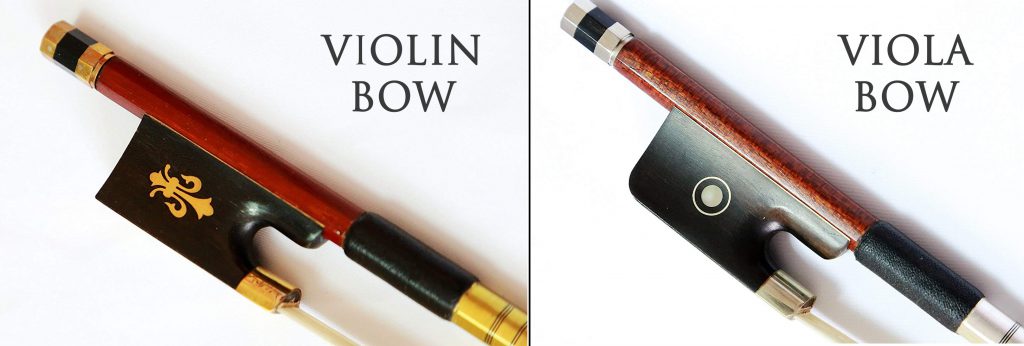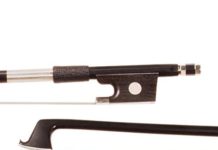To most laypeople, the differences between the viola and violin are confusing. As a matter of fact, some would think that they are the same instrument. But there’s more to these instruments than meets the eye. In this article, we are going to explore the features that set these instruments apart from each other. We’ll start with an overview of the violin and viola separately so that you can grasp their differences and similarities more easily.
Violins and violas are magnificent instruments that you can hear in classical music, some pop songs, and other genres of music. Most people can easily recognize the differences between a viola and violin when the instruments are compared up-close, but when placed in an orchestra setting on-stage, most people cannot tell the difference. Only educated musicians know the real difference between the viola vs. violin.
If you love classical music, or if you just want to understand the differences between these instruments, we are here to provide you with the knowledge to discern the main characteristics of these beautiful instruments, both their similarities and their differences.
The Violin
The violin is a traditional Italian wooden stringed instrument that is the archetype of the entire violin family. It produces a beautiful, high-pitched sound, and it’s considered to be one of the hardest instruments to play.
Origins of the Violin
The first violin was crafted in Italy at the beginning of the 16th century, and it was used in its original state and form for two hundred years before it received significant modifications in its design and form. The violin trend caught on throughout Europe, and halls were filled with violin music shortly after its arrival.
The 18th and the 19th centuries are known for violin-oriented music – it’s safe to say that musicians those days preferred the sound of this magnificent little instrument. Some of the most famous violin brands created back then were Stradivari, Guarneri, Amati, Brescia, and Cremona.
The Violin Family
The violin was so famous that it was used as a model for many other instruments. Educated musicians and teachers from Renaissance Italy invented the term violin family (violas da braccio) so that it could be easily distinguished from the viola family (violas da gamba). Since then, these families have merged, forming the list of the most used violin-based instruments:
- Large Form Cello
- Small Form Cello
- Tenor viola
- Contralto Viola (Counter-Alt)
- Large Violin
- Small Violin
- Piccolo Violin
- Bass
- Double Bass
Violin Strings
The violin is traditionally a 4 stringed instrument. Usually, the tuning of these strings is the same as the traditional bass guitar – E, A, D, G. Originally, violinists prefer synthetic strings over steel strings. The “standard E” tuning is a matter of preference, but there are various others, including the violin open tuning, standard A, standard C, and many more.
The Violin’s Sound
Describing a sound with words is very hard, mainly because everyone perceives music differently. It’s hard to imagine that there are two people who can experience a song in the same way, with the same chills, thrill, and enthusiasm, but we could try to explain the tone in several situations:
- The violin sounds bright: The violin has the highest pitch of any of the string instruments in an ensemble which makes it sound bright in comparison to any other string instrument.
- The violin sounds important: It doesn’t matter what genre it is, or what function the violin has – you can’t ignore the sound of the violin in a song. Even if it’s just an easy melody, you will hear it, and you will remember it because of its higher pitch.
- The violin is often a synonym for beautiful sadness: Did you ever hear of the phrase “And the world’s smallest violin played”? It often portrays a funeral or intense depression. The violin can literally weep when you play it, and that’s the beauty of it.
- The violin can also sound epic: Apart from classical music, the violin is often used in various electronic and pop music, even heavy metal. In these settings, the violin sounds pretty epic – fast-paced rhythms and high-pitched squeals sound epic all the way.
Violin Names
Originally, the violin came from Italy where it got the name violin. Nowadays there are different names which people use to refer to the violin, such as Violon (French), Geige (Germany), Violina (Balkan States), Keman (Turkey), and Fiddle (when used in folk music genres). There’s no real significance in naming it differently apart from the fact that you might hear people from various nationalities calling the violin by a different name.
Violin’s Versatility
The violin became famous in the 16th century when it dominated the classical music scene. It was used to create mellow melodies when played in rhythm sections and to create a vivid atmosphere when it was used in the lead section, but that’s not all the violin can be used for.
With the insurgence of the violin into the dominant music genres of the 50s, 60s, and later, people used the violin in various music genres for various different roles:
- Jazz Music – Jazz musicians often used violin for complex sections, creating a tense, but comfortable atmosphere;
- Rock Music – Violins were often used in rock to accentuate refrains and bridges;
- Blues Music – Blues players often focus on sad melodies which violins play very well;
- Electronic Music – It is commonplace in electronic music to make intros with violin instruments;
- Metal Music – Since metal music has various sub-genres, the violin’s versatility is pretty hard to describe. Ranging from alternative progressive metal where the violin was used with extreme skill, overpower metal where it was used as a lead, ending with doom and black metal where musicians used the violin to create a haunting, dark atmosphere;
The Viola
The viola is often mistaken for the violin by uneducated musicians and people who do not play any instruments. Even though it’s somewhat larger, it looks very similar, and the sound can only be discerned from that of a violin by people who know these instruments well.
The viola is very important to music in general – orchestras worldwide combine the two instruments in their performances, and it’s hard to imagine one without the other in classical music.
Origins
The viola was invented by the Italians (as was the violin), and it was called many different names before everyone agreed that it could simply be referred to as the viola. In the beginning, the term “Da Braccio” was often placed right next to viola, which literally means “of the arm.” Another Italian term for Viola was “Brazzo” (probably in tight correlation with “Da Braccio”), which the Germans soon adopted to create their own name “Bratsche”.
Even though the viola can take the lead with ease, most orchestras employ the viola in accompaniment parts. The parts that are often referred to as those “inner voices” are played by viola and second violins in classical music.
The Viola Family
One of the main reasons why the viola got its own family name is because it was hard to distinguish from the violin. Even though “Da Braccio” was used for violas at the beginning, it actually pointed towards violins soon enough – the viola family got renamed to “Da Gamba”.
The Viola’s Strings
As with the violin, the viola is also a 4-stringed instrument. Viola strings are thicker when compared to the violin – this is also one of the main reasons why the sound is so much deeper. The tuning is also different – most violas are tuned in the standard A tuning with the strings being: A, D, G, C compared with the violin’s E, A, D, G.
The Viola’s Sound
The viola sound resembles that of a violin, and it can only be described when we compare the two. If we can say that the violin’s sound is haunting and high-pitched, the viola’s sound is deeper and more mellow. Unfortunately, the viola’s sound is often consumed by the violin’s sound since violas are mainly used in the accompaniment parts.
Viola Names
The viola is called many names throughout the world, even though the regular “viola” is the most common. For instance, Frenchmen call it Alto and Cinquiesme, Germans call it Bratsche, and such. Just as the violin has different names, the viola’s different names all refer to the same instrument.
The Viola’s Versatility
Before the twentieth century, the viola was used to fill the gaps in harmonies, and there were not many melodic parts for it. The viola’s lines were often identical to those of other stringed instruments and it was played in unison with it.
Not long after the beginning of the 20th century, various composers and performers began their work with solo viola songs, parts, and roles. The viola received a massive boost to its role and versatility, and the trend caught on pretty quickly.
Some of the famous viola players that took part in the revolution of the viola’s role are Arthur Bliss, Benjamin dale, Ralph Williams, and others (fun fact – these three gentlemen wrote the theme song of Tetris).
7 Key Differences Between Violin and Viola
While the basic differences between the viola and violin can be boiled down into the table below, this is not a thorough enough explanation of the differences. By simply saying that violas are much larger and that they sound differently, we’re not saying anything wrong, but that’s just the tip of the iceberg.
| Feature | Viola | Violin |
| Size | 8 1/2″ – 20″ | 8 1/2″ – 14″ |
| Strings | C, G, D, A | G, D, A, E |
| Solo Repertoire | Limited | Varied |
| Sound | Mellow | Bright |
| Typical Orchestra Location (Looking at Stage) | Middle-Right | Left |
We’re going to talk about the difference in size, strings, note range, clef, and bow.
1. Viola vs. Violin Size
One of the most obvious differences between the violin vs viola is their size. If you put these two instruments side by side, you will immediately recognize that one of them is larger than the other. That would be the viola. A typical viola ranges from 15 inches to 16.5 inches in length, though larger violas can reach up to 20 inches in length. A violin, on the other hand, averages about 14 inches.
The widths of the two instruments are also different, with the viola naturally being the wider instrument. In addition, a viola has four different sizes, while a violin has nine different sizes. Small violas can be as small as 12 inches in width, while small violins can be as small as 7.5 inches.
 2. Violin vs. Viola Strings
2. Violin vs. Viola Strings
Generally, the violin and the viola both have only four strings. However, the open notes of these instruments differ. The violin strings are G, D, A, and E, with G being the lowest string and E the highest.
The viola strings, on the other hand, are C, G, D, and A. The strings are tuned down one-fifth below the violin. While three of its strings are the same as the violin, the viola strings are thicker, allowing musicians to play in a lower register and produce deeper timbres.
3. Note Range
Because the tuning differs, the range of notes between these two instruments varies as well. The notes of the violin range from the G below Middle C (on the lowest string) all the way up to C8, 4 /2 octaves higher. On the other hand, the notes of violas range from a low C (an octave below Middle C), up to A, just over 3 octaves higher. The viola can hit a note four steps (or seven semi-tones) lower than the lowest note of the violin.
4. The Clefs
Another difference between these two instruments is the clef that they use in their notation. The violin is played in the treble (or G) clef. Being the highest-ranged stringed instrument, musicians and composers have often regarded this instrument as the soprano voice of any symphonic orchestra. As a result, violins are often afforded solos or leads in ensembles.
The viola is the only stringed instrument to use the alto (or C) clef. It is a mid-range instrument with a distinctive alto voice, since its range falls between the violin and the cello as we mentioned before. These deeper tones lend it more to harmonic support.
 5. Viola vs. Violin Sound
5. Viola vs. Violin Sound
Due to the thickness of the strings and its larger size, the viola usually produces a deeper, more “sultry” sound. The lower note range of the viola also affects its mellow sound. Because of its sound quality, the viola acts as the mediator between the articulations of the violins and the cellos. It often provides harmonic and rhythmic elements for the orchestras.
The violin, known for its high note strings, has a bright and elegant sound. Because of this, composers usually use this instrument as a solo instrument. Take, for instance, Mozart’sViolin Concerto No 3. Throughout the piece, you can hear the violin acting as the lead, reinforced by the other instruments (although there are also some very fine pieces composed for viola solos, such as Beethoven’s Notturno for Viola and Piano).
The range difference, combined with the different strings on each instrument, as well as the size of the two instruments, allows the viola to produce a deeper, richer sound. The instrument itself is a step between a violin and a cello, and its tone reflects that. For all the differences between the two instruments, we would argue that this one is the most important.
One other factor that might influence how the instruments sound within an orchestra is their placement in the orchestra. Since violas provide more harmonic elements, they only have one section in the orchestra. Violins, on the other hand, have two sections: the first and the second violins. As a result, the violins could often outnumber violas two to one.
6. The Bow
Of course, you cannot play either instrument without the bow, but there is a difference between a violin bow from a viola bow. Viola bows tend to have a weight ranging from 69 to 74 grams. Violin bows, on the other hand, are lighter. As a matter of fact, violin bows are 10 grams lighter, on average, than viola bows. This helps contribute to the brighter sound that the violin produces. The viola bow is larger because the strings of the instrument are thicker, and require more weight and force to produce a sound.
Another difference that you can see is on the frogs of the bows. A frog is the part of the bow that you hold. Viola bow frogs are generally curved, while violin bows have straight edges. This impacts how the musician drags the bow across the strings, which also influences how the instrument sounds.
7. Location in Orchestra
Traditionally, the violas sit between the second violins and cellos on the right half of the stage (see photo below). However, some conductors will prefer to place the violas on the outer right edge of the stage or next to the first violins on the left half of the stage.
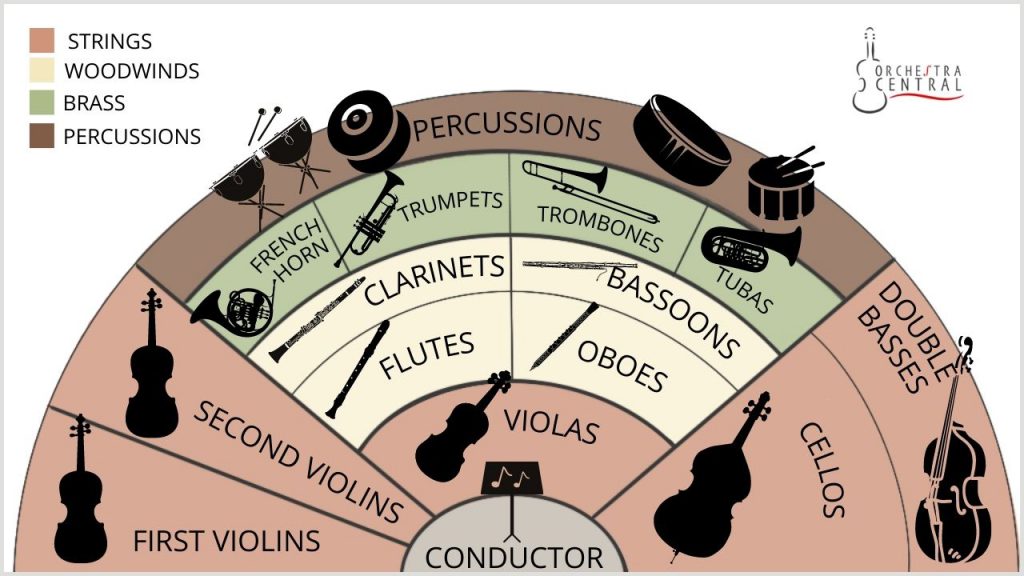
Wrapping Up
We hope that the next time you see a violin or a viola you will be able to see which instrument you are looking at! Remember, though, that the difference that matters most is the sound! Without these different instruments, the orchestra would be very boring.
Table of Contents

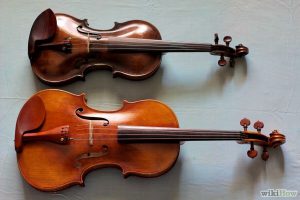
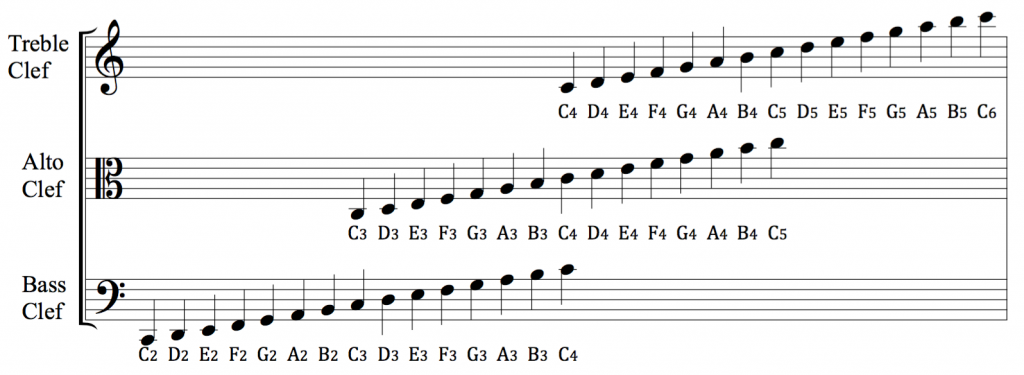 5. Viola vs. Violin Sound
5. Viola vs. Violin Sound